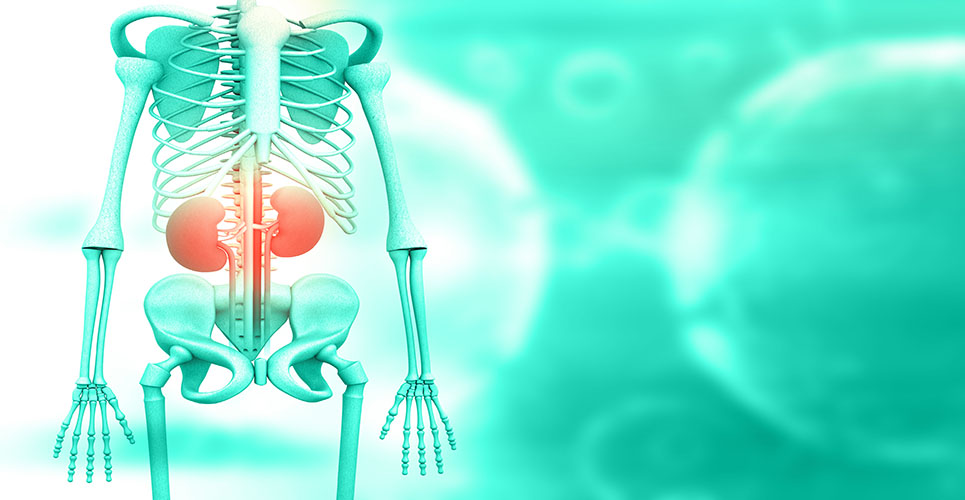teaser
María Pilar Ortega-García
PharmD
Hospital Pharmacy Specialist
Department of Pharmacy
Pilar Blasco-Segura
PhD
Hospital Pharmacy Specialist
Chief of the Department of Pharmacy
Department of Pharmacy
Consorciò Hospital General Universitario Valencia
Spain

Central retinal vein occlusion is a common retinal vascular cause of visual loss attributed to venous thrombosis of the lamina cribosa retrolaminal optic nerve. Intravascular pressure is thought to increase from resistance to blood flow from the thrombus, leading to breakdown of the blood–retinal barrier and extravasation of blood and fluid throughout the retina. Continued extravasation can lead to increased oedema and capillary closure. Retinal ischaemia may liberate vaso‑proliferative factors, which stimulate the development of anterior- or posterior-segment neovascularisation.(1)
Systemic administration of fibrinolytic agents has shown beneficial effects on retinal blood flow but was associated with risk of massive vitreous haemorrhage and cerebral haemorrhage. Therefore, systemic administration of fibrinolytic agents is not recommended in retinal vein occlusion. Intravitreal injection of 25–50 μg/0.1 ml tissue plasminogen activator has been described as a safe and easy way to deliver thrombolytic agent locally.(1–4) Tenecteplase is a third-generation recombinant plasminogen activator that is commercially supplied in 40 mg and 50 mg (8,000 and 10,000 IU) vials and approved for single bolus administration in acute myocardial infarction.5 There are no stability studies of dilutions frozen in preloaded syringes. Our objective is to develop a tenecteplase dilution technique and to assess the stability of preloaded syringes at –80ºC.
Main discussion
In sterile conditions (in a horizontal laminar-flow cabinet), tenecteplase 40 mg vial (Metalyse® 8,000 IU, Boehringer Ingelheim España) was reconstituted with 8 ml of sterile water for injection (SWI). The reconstituted material was dispensed into 100 ml sterile glass vials and 32 ml of SWI were added. Of this dilution, 2.5 ml were mixed with 7.5 ml of normal saline (25 μg/0.1 ml) and twenty 1 ml syringes were loaded with 0.5 ml and frozen at –80ºC. Analysis of protein concentration was performed using ultraviolet (UV) spectrophotometry. A UV/visible-spectrum spectro‑photometer (GBC 918 UV/VIS GBC; ScientiWc Equipment, Victoria, Australia) was employed, the measurement was blanked against normal saline and a 240–400 nm UV scan was obtained. Maximum absorption was at 285 nm. Dilutions of tenecteplase in normal saline at 62.5–500 μg/ml were prepared to check concentration/absorption linearity at 285 nm. A correlation coefficient of 0.9987 was obtained. Tenecteplase concentration of the frozen syringes was measured just after thawing at room temperature. The stability study lasted 388 days. Assays were undertaken on the day of reconstitution and dilution (baseline), every two days until day 8, every week until day 29, every two weeks until day 113, every month until day 242, every two months until day 303 and finally at two-and-a-half months until day 388. The tenecteplase concentration of each sample was considered as relative to the baseline value, that is, supposed 100%. The United States Pharmacopeia (USP) considers as a validity margin percentages of recovery from baseline of 90–115%.(6)
Figure 1 represents percentages of tenecteplase recovery during the study period. The final assay revealed a tenecteplase recovery from the baseline concentration of 89%. Except in the final case, all values of protein recovery are between USP validity margins.
Conclusions
Intravitreal injection of 25–50 μg of tissue plasminogen activator has been described as a safe and easy way of deliver thrombolytic agent locally, avoiding the adverse effects of these drugs administered systemically.(1–4) However, this dose is small compared with the amount supplied in commercially available products. For this reason dilution and freezing of aliquots of recombinant tissue plasminogen activator has been performed to decrease wastage. Descriptions exist of dilution techniques and stability in syringes of a different recombinant tissue plasminogen activator, alteplase,(7–8) but no information is available on the dilution and storage of tenecteplase. Only one study has been identified that analyses the stability and bioactivity of frozen/thawed aliquots of tenecteplase at 5 mg/ml in sterile water and tenecteplase dilutions at room temperature. Tenecteplase is fully active after reconstitution and freezing/thawing cycles and when it is diluted (at 0.01–0.05 mg/ml) it retains biological activity at 24 hours without precipitation.9 But intravitreal doses are smaller than that in this study and we need to know about stability beyond 24 hours.
Our study supports the clinical practice of diluting tenecteplase to 25 μg/0.1 ml with normal saline, preloading in syringes and freezing at –80ºC over one year because tenecteplase concentration during this time is maintained within the validity margin established by USP. This practice decreases wastage of commercially available tenecteplase. and consequently the cost. One vial of tenecteplase 40 mg costs €1,009.33, and with dilution and freezing of aliquots the €50,47 cost per dose of 25 μg/0.1 ml tenecteplase compares favourably with the cost of one vial per dose.
References
1. Elman MJ, Raden RZ, Carrigan A. Intravitreal injection of tissue plasminogen activator for central retinal vein occlusion. Trans Am Ophth Soc 2001;99:219-23.
2. Weizer JS, Fekrat S. Intravitreal tissue plasminogen activator for the treatment of central retinal vein occlusion. Ophthalmic Surg Lasers Imaging 2003;34(4):350-2.
3. Glacet-Bernard A, Kuhn D, Vine AK, Oubraham H, Coscas G, Soubrane G. Treatment of recent onset central retinal vein occlusion with intravitreal tissue plasminogen activator: a pilot study. Br J Ophthalmol 2000;84:609-13.
4. Ghazi NG, Noureddine N, Haddad RS, Jurdi FA, Bashshur ZF. Intravitreal tissue plasminogen activator in the management of central retinal vein occlusion. Retina 2003;23(6):780-4.
5. Turcasso NM, Nappi JM. Tenecteplase for treatment of acute myocardial infarction. Ann Pharmacother 2001;35(10):1233-40.
6. US Pharmacopeial Convention. United States Pharmacopeia. Rockville MD: USPC; 1990: 21: 829.
7. Ward C, Weck S. Dilution and storage of recombinant tissue plasminogen activator (Activase) in balanced salt solutions. Am J Ophthalmol 1990:109(1):98-9.
8. Jaffe GJ, Green GD, Abrams GW. Stability of recombinant tissue plasminogen activator. Am J Ophthalmol 1989:108(1):90-1.
9. Emba CP, Weck S, Razavi MK, Tuomi L, Patapoff T. Tenecteplase: stability and bioactivity of thawed or diluted solutions used in peripheral thrombolysis. J Vasc Interv Radiol 2003;14:475-9.

